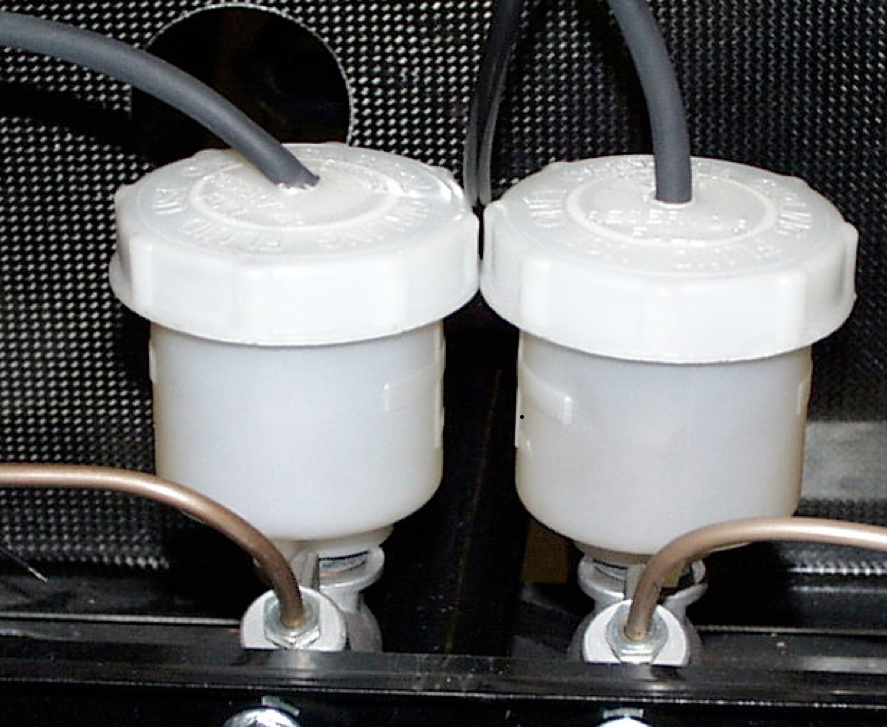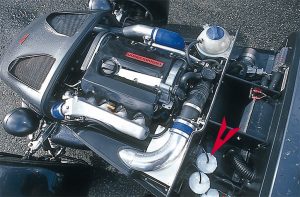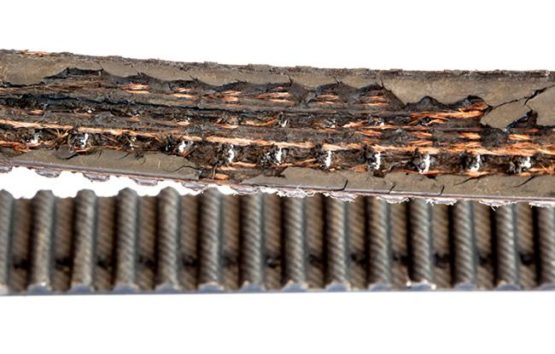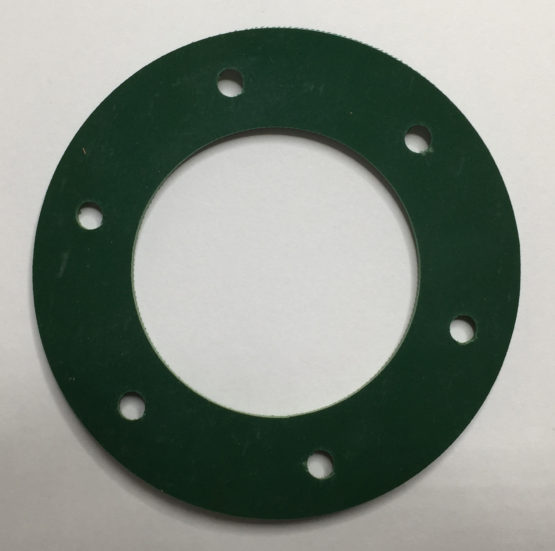Operation – Brake system D8 1999 – 2010 (click image to enlarge)
Brake fluid
The tank for the brake fluid is located on the left hand side of the engine bay, see the overview of the engine bay.
The brake fluid level should always be between the min. and max. markings. A minor decrease in the amount of fluid is normal through wear and tear on the brake pads.
If a significant decrease in the brake fluid occurs in a short period of time, however, this could indicate a leak in the brake system. If the brake fluid level is too low, this will be indicated by the brake control warning indicator. In this case, the brake system should be inspected immediately.
Check for potential leaks on a regular basis. Brake fluid is aggressive and is attacking your powder coated chassis, which can cause rust!
We receive a lot of questions which brake fluid should be used to refresh the Donkervoort brake systems with on a bi-annual basis. 1-1,5 liter is sufficient for one refreshment and bleeding of the system. Don’t keep brake fluid containers in stock which have been opened. The opened bottle attracts water from the air.
The best option is high performance brake fluid from Castrol; Castrol SRF. The compressibility of Castrol React SRF Racing is very similar to that of current DOT 3 and DOT 4 fluids. It can therefore be filled into any braking system used in motor sport with the exception of those for which a mineral oil is prescribed. It gives a “hard pedal” feel.
Application
For all braking systems where conventional or polyglycol brake fluids are recommended in high performance vehicle and competition applications. Highly recommended for cars used for “Club and Track days”.
Features & benefits
- Widely used in racing, from Formula One, sports cars, V8 Supercar and Grand Prix and Superbike motorcycles.
- The exceptionally high dry boiling point (higher than 300°C) makes Castrol React SRF Racing ideal for use under arduous braking conditions such as rallying or racing. It exceeds the boiling point requirements of DOT 5 brake fluids.
- Very high vapour lock point and has the additional advantage of sustaining high vapour lock point characteristics during its service life.
- Uge advantage: It is mixable with all conventional fluids! meeting the US Federal Standards FMVSS 116 DOT 3, DOT 4 and DOT 5.1, ISO 4925 and current SAE J1703. This means that changing the brake system to Castrol SRF is easy. Drain and flush out the conventional brake fluid with Castrol SRF then top up the system with Castrol React SRF Racing. Although Castrol React SRF Racing is miscible with conventional brake fluids, topping up Castrol React SRF Racing with conventional brake fluids will reduce the benefits of the product.
- It is compatible with seal rubber and metal materials used in brake systems using conventional polyglycol brake fluids.
- It is similar in viscosity to conventional brake fluids so is easy to bleed like conventional brake fluids.
Specifications
Castrol React SRF Racing is suitable for all disc and drum brake systems used in motorsport with the exception of those for which a mineral oil is prescribed. lt complies with the requirements of the following specification:
- US FMVSS 116 DOT 3 and DOT 4.
- SAE J1703.
- ISO 4925.







